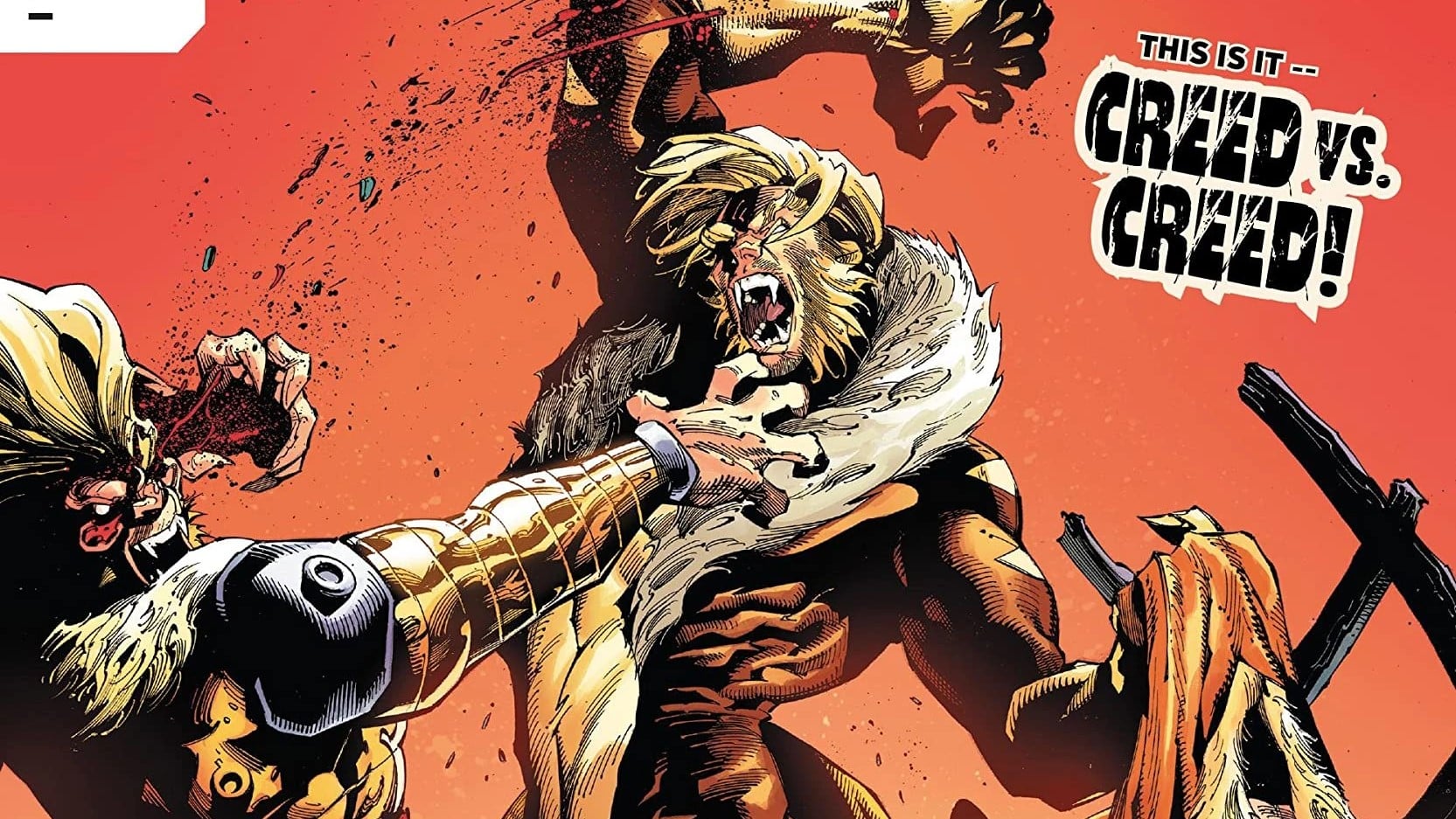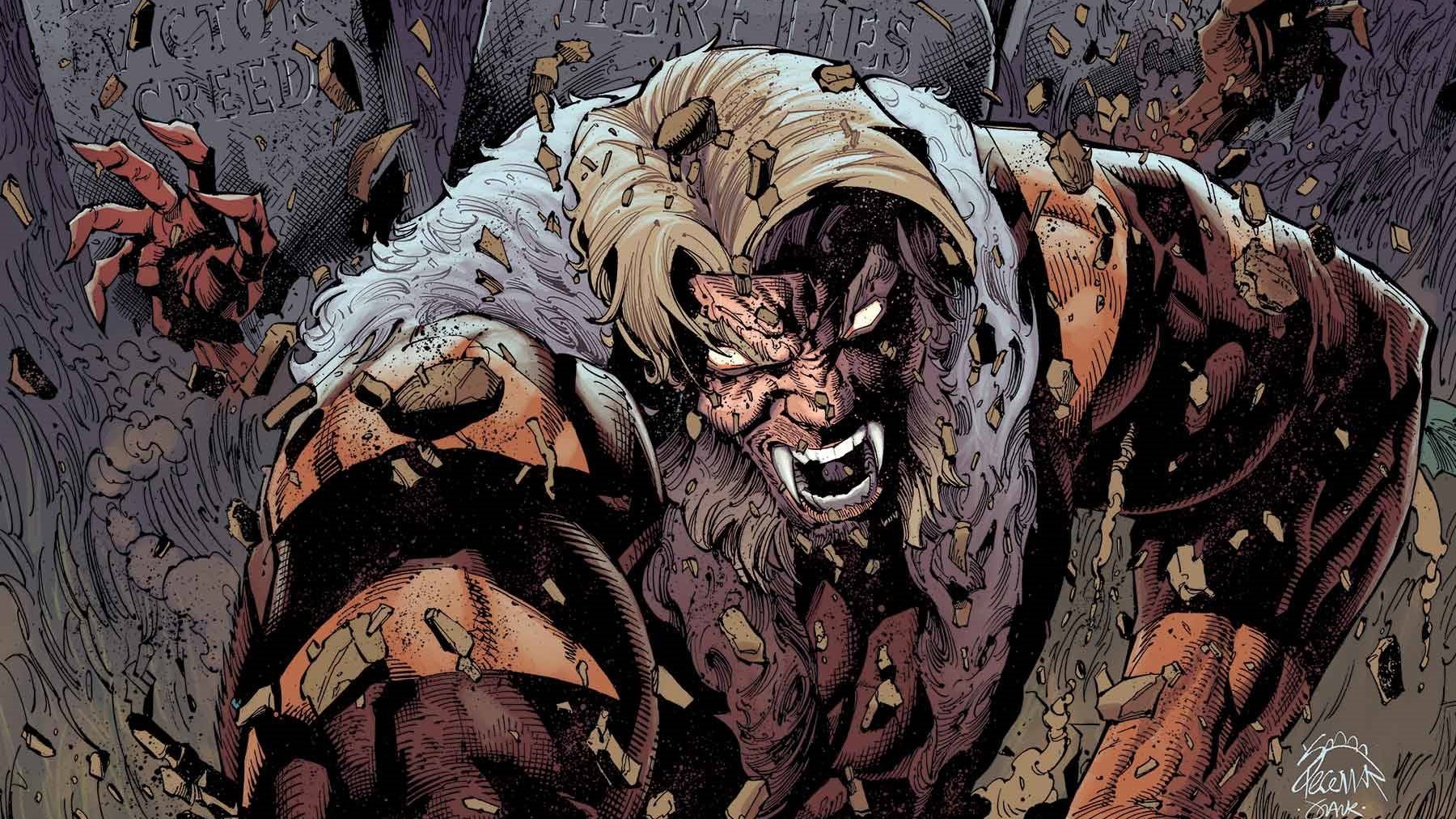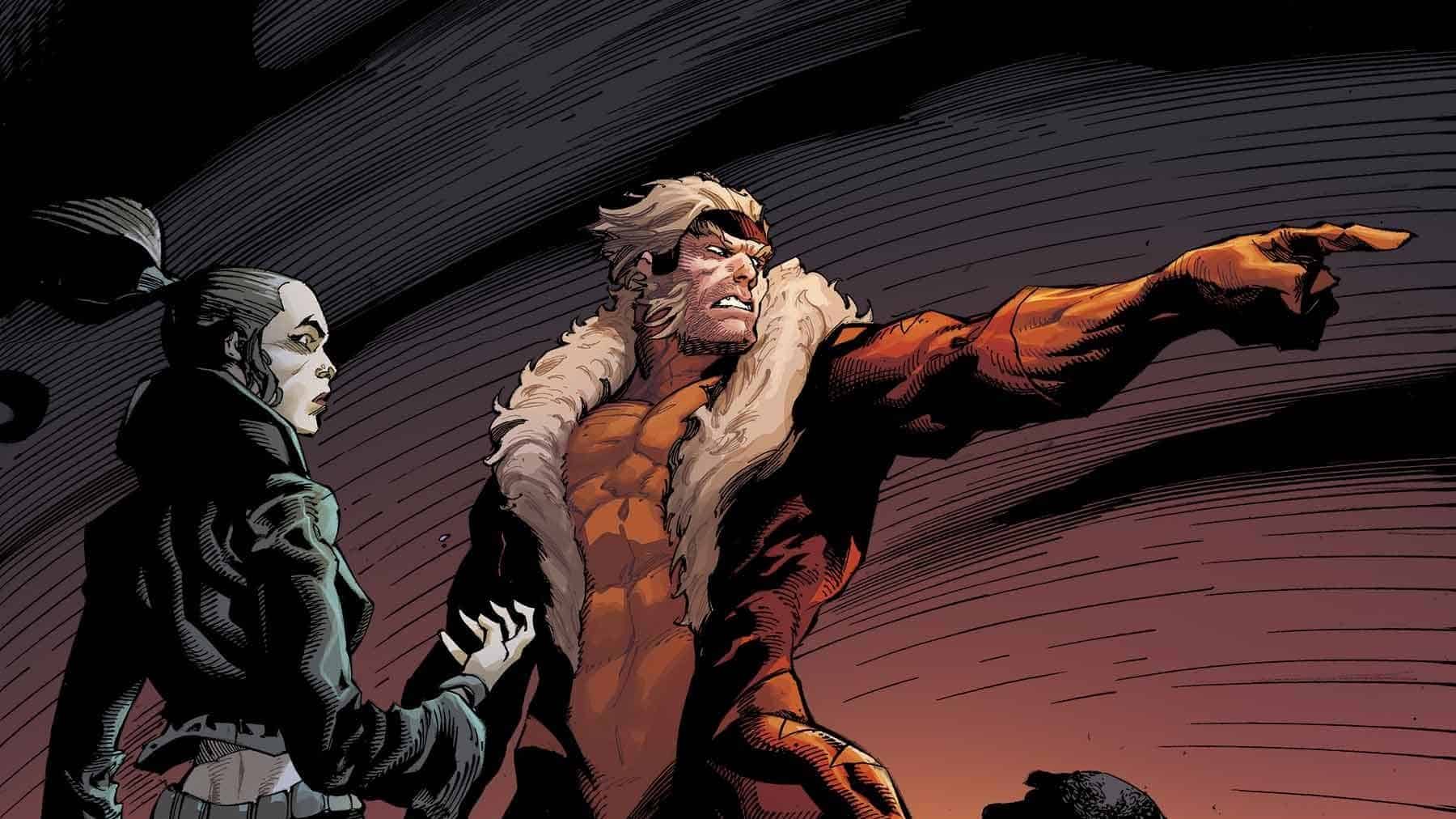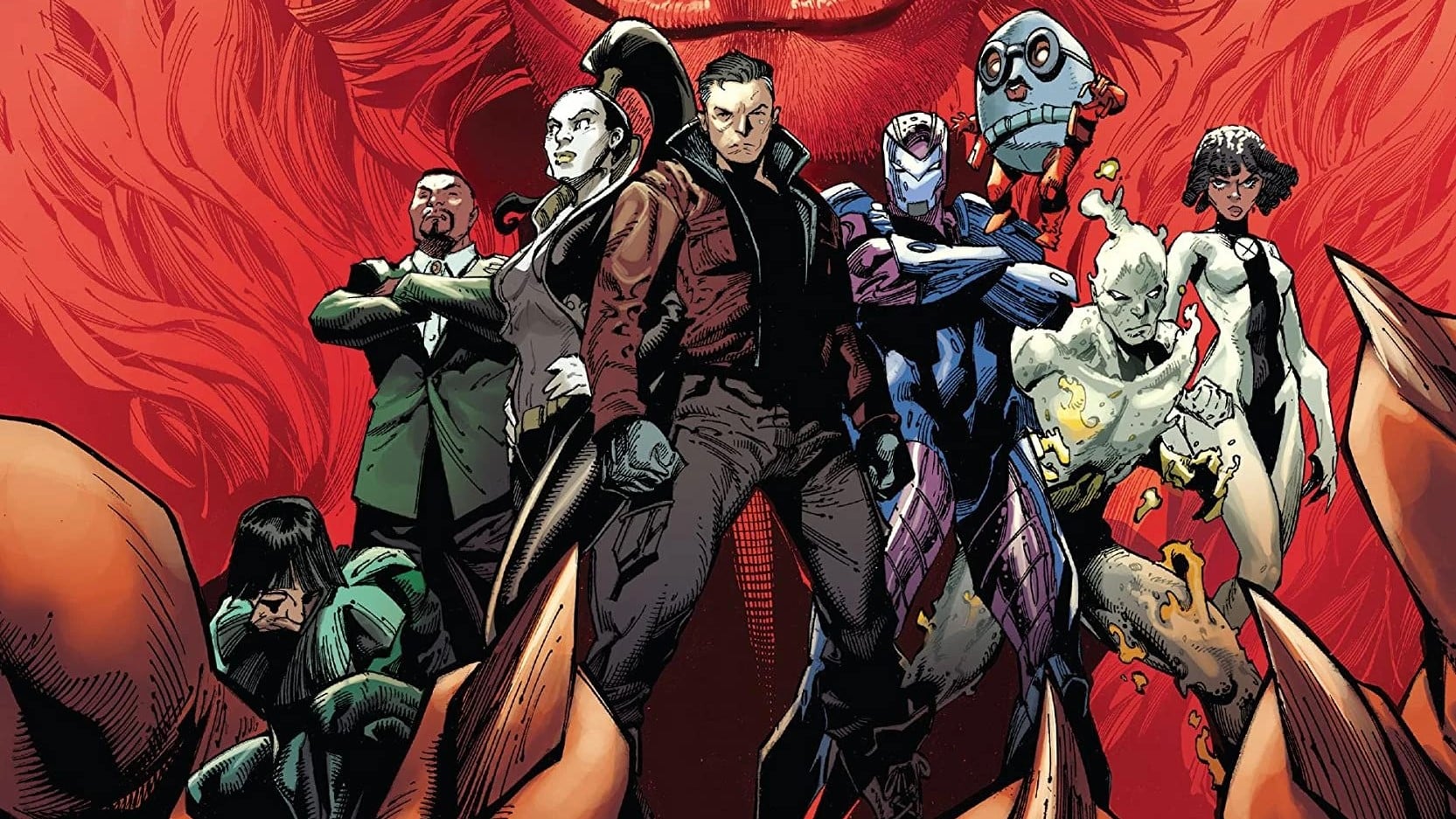More Sabretooth(s) means more mayhem and everyone needs their Nanny in this epic conclusion to the second story arc recounting Victor Creed & Co’s ongoing escape from Krakoa. Sabretooth and the Exiles #5 is written by Victor LaValle, drawn by Leonard Kirk, colored by Rain Beredo, and lettered by Cory Petit.
Jude Jones: Gordon Plaza was supposed to be a haven for the families fortunate enough to buy affordable homes in this New Orleans neighborhood. Instead, they found a perpetually mutating hell, a putrid purgatory of never ending broken promises and red tape.
The land these people, these hard working, middle income, largely Black people invested their savings into what turned out to be an irreparably contaminated money put. The soil, laced with chemicals and contaminants, triggered health issues and lawsuits. Their homes, the investment they logically assumed would increase their wealth, became an albatross around their necks, eradicating any appreciation and making sales almost impossible.
Still, about 60 people still make a home there, risks be damned. Why?
Because it’s theirs.
Because for those left behind, there’s nowhere to go.
Thus they’re still here, fighting, talking, bargaining to get what they’re owed.
To get their fair worth.
To get recognition that their lives have worth.
If no one else will fight for us, then we will have to fight for us.
————
The twin themes of Community and Justice center Victor LaValle’s Sabretooth and the Exiles Saga: who comprises community, who’s embraced and excluded in community; who administers justice in a community; and why justice can look so different among folk from supposedly the same community. LaValle’s use of allegories and allusions serves as thematic connective tissue, tieing in years of comic lore with context cribbed from real world history and current events. We’ve noted in our reviews how these allusions and allegories can feel hamfisted and overwrought; yet, I find the clarity of these direct, clear, unambiguous comparisons endearing and informative.
I feel like this comic was written specifically for me, with all my proclivities in mind.
This final issue isn’t perfect, but it is a solid landing, and for that I do appreciate it. Things feel maybe a bit rushed, like there could have been one more issue to spread out the action. But maybe I’m just projecting my desire to see more of what I’ve thoroughly enjoyed over the past year or so.
The LaValle and Kirk Sabretooth saga has been more than worthwhile to read and share thoughts about. I’ll be sad to see it end, but I’m so glad that it happened.
Anna Peppard: When reviewing this series (and the Sabretooth one preceding it), I often go to a similar place of feeling like I should criticize the directness of the allegories, only to realize I actually love the directness. There’s a difference between being direct and being didactic, and I don’t believe this series has ever been the latter. I already think a lot about the mutant metaphor. As such, I’m sometimes tired of thinking about it. This series has made me want to think about it more, which is no mean feat.
I have mixed feelings about this particular issue in the sense that allegories take a back seat to more typical comic book-y stuff, by which I mean multiversal shenanigans, continuity shenanigans, and mutant deus ex machinas. But a lot of this stuff’s pretty fun, and I don’t want to be a grouch, so I’m going to try and lean into it. Multiversal headless zombie Sabretooth armies need love, too!
Sins of the Father

Jude: I imagine parenting can be rough. Devoting so much time and devotion to people who don’t have the capacity to understand what you’re doing or why you’re doing it; giving to people who can’t say thank you or show even a modicum of appreciation for your sacrifices.
I imagine being a father is hard.
I imagine being fathered by Sabretooth would be harder.
Graydon Creed, the non-mutant son of Sabretooth and Leni, certainly has a right to be angry. His parents abandoned him early, leaving him to find his way in less than optimal circumstances. This anger towards his mutant parents fueled his hatred for all mutants, manifesting in ways both silly and sincere over the years. Here, that combination of silliness and sincerity continue to play into each other: he’s back from the dead, returning to life – from Hell! – as a result of his father’s heroic (and subsequently mind-wiped) intercession.
And what thanks does Sabretooth get for this sacrifice?
A son who scours the multiverse, wiping every iteration of his erstwhile father from existence.
Sabretooth – incapacitated from the mutant power suppressing coil in his stomach, staring at the severed heads of his alternate selves, legs crushed by his son’s feet – has no more to give. Not to his child, not to the Exiles.
And yet he is saved by the only person he’s ever trusted, the only person he’s ever cared about, the only person that matters.
Himself.
A triad of Sabretooth variants – analogues of Captain America, Ka-Zar, and, uh, Johnny Cage(?) – suddenly appear out of nowhere, flaying severed heads and knocking Graydon off course.
Community does many things: it keeps you honest. It holds you accountable. It helps you while you’re down. We see the community of Sabretooths [Ed. note: Sabresteeth?] do all three: telling 616 Sabretooth that this is his mess; taking the coil out of him; giving him the option of helping, as they helped each other – if he survives.
Sabretooth is not known for helping anyone out of the goodness of his heart. We’ve seen him, time and again, do good only as long as doing good benefits him. Here, though, we see Sabretooths who’ve done good for each other, recognizing that they’re better together. They easily could have gone their separate ways after being freed, and yet they stuck together as a pack, fighting together, risking lives for each other, for a common goal.
In the end, everyone needs a community – even if the community is just versions of yourself.
Sabretooth easily could have escaped after the coil was (violently) ripped out of his stomach. He could have hid and recovered. And yet he didn’t: he joined with his other selves. He worked for a communal benefit.
Now, will he at some point betray himself? Probably! Can he fully trust himself? Probably not… but maybe! Remember in the Pit, he managed sanity and planning by communing with parts of his personality; he fantasized about destroying Krakoa, the galaxy, the universe not as a single entity, but as part of a team.
Even Sabretooth, the consummate, conniving loner, needs, maybe secretly desires, community. And what better community for this nefarious narcissist than versions of himself?
Anna: I am in awe of how you teased out the deeper meaning of this community of Sabretooths. I was mostly caught up in the self-conscious silliness of it all, which arguably climaxes with Graydon tossing a smoke bomb and escaping through a cartoonish trap door. But it’s definitely a deft ironic twist for Victor Creed, a poster boy of selfishness, to ultimately reject the Exiles in favor of a community composed of equally lethal versions of himself. The mortality questions also interested me – more on that in the next section.
Guess Who’s Back

Jude: Sabretooth is a comic written by a man who loves his body horror, so we shouldn’t be surprised at the headless zombie Sabretooth bodies roaming around, as if fresh out of a horror movie – though more Evil Dead than, say, the Exorcist. Still, seeing Graydon unleash these beings was a bit of a surprise.
It shouldn’t have been.
Note how his time with Dr. Barrington further debased his morals around science, believing science (and all it touches) is simply meant to serve his whims, collateral damage be damned. Think about this practically: he’s had to murder versions of his father hundreds of times. It’s deprived enough (cathartic enough?) to do it once, but hundreds of times? Sheesh. Note how his lament – “if you wouldn’t be my family, you will be my slaves” – is tinged with hurt and loss. Note how Leonard Kirk moves from panel to panel, from one headless body, to two, to three, to a menagerie, the number of bodies rising in unison with Graydon’s rising anger.
Kirk has done masterful work throughout this run, pairing R-rated violence with moments of transcendence and serenity. This issue in particular relies on his ability to make you feel the moment: the violence, the pain, the horror. There is less dialogue here, and more of that dialogue is used to describe what’s happening in the moment: “Stay with us” and “Guess who’s back.” Kirk fleshes all this errant flesh out into an enjoyable, thoughtful body of work. Every bit of the (well earned) praise that we’ve given to LaValle deserves to be heaped onto him, as the excellence of work is equally due to his depictions.
I’m really going to miss these two.
Anna: I’m sometimes a bit less hot on Kirk’s work than you are. Don’t get me wrong – I think he’s put a ton of effort and passion into this series, which does come across on the page. And I’ve said it before and I’ll say it again – comic book art is extremely subjective. But I feel like Kirk had a slightly better handle on the hellscapes of the Pit than some of the fantastical cerebral elements of this story arc. Graydon’s muscle suit should be a little gooey-er, the bloody battle between the Creeds with heads and the Creeds without heads could be a little splashier, Nanny regressing the Exiles to an infantile state could be a little more outrageous. The scene with the headless bodies waking up is solid, though – 100% in agreement about the suitably horrific pacing and framing there.
The symbolic stuff that particularly intrigued me in this issue was how the headless zombie Creeds literalize themes running through this series and the one before it, about individuality and biopower and who gets to control them. Victor Creed has often variously fought against/embraced his own dehumanization. He’s made himself an animal or a thing when it suits him, and been embraced as such in turn. Isn’t that what the Quiet Council did when they sent him to do their dirty work then tossed him in a hole to keep their own hands clean? Of course, what Graydon does here is also an inversion of what the Quiet Council did. They (ostensibly) preserved Creed’s body while imprisoning his mind. Graydon kills the mind to use the body. But both abuses amount to the same thing – that dehumanization I mentioned before. And I think that’s kinda the point.
Child’s Play
Jude: Like Graydon, the children left at the bottom of the sea by Orchis are hurting. Like Greydon, they were abandoned (likely forcibly) by their real parents, then left to rot by their adopted captors. Like Greydon, their fury is blind, though unlike him their fury is not limited to mutants – in their case, as adults have been the one to hurt them, adults and only adults are recipients of their psychic ire. These kids – and all kids really – are simply reflections of what’s been provided to them. If you neglect them, they will grow up angst-ridden, angry, spiteful. And we, the neglecters, will ultimately feel the brunt of their young burdens.
The nation of Krakoa found ways to make some mutants feel more equal than others, thus it finds itself separated from those it only purports to protect. The island of Krakoa held Sabretooth in it, hiding him, engulfing him, until his hatred permanently scarred the island’s psyche. Orchis, time and time again, used mutants to fester plans of death and destruction, only for those plans to blow up in their faces. The theme of these works, then: you reap what you sow, though as the Exiles are finding out, all too often the innocent reap what someone else has sowed.
And it’s up to the innocent to make it right.
Anna: I swore I wasn’t going to be grouchy in this review, yet I can’t help admitting I’m a little disappointed that the babies are actual babies. In a comic full of wild twists, I was hoping for another wild one. (I also continue to be a teensy bit frustrated by the messiness of how being a mutant actually works in X-Men comics. Having powers at birth was super rare until it became a convenient plot device. This is not, however, a problem that originates with this comic, so please ignore me.) But comparison is the thief of joy and I totally agree that what we do get fits the overarching themes of this saga, which continues to dissect the great Krakoa experiment as well (or better) than anything else.
Jude: Again, we see the beauty of community: the Exiles relying on each other, protecting those who can’t fight the best they can; the team, trusting Nanny’s plan to mentally regress them to childhood so she can calm the abused children’s shattered Psyches. (The splash page, with Oya holding a bear, Dr. Barrington sucking her thumb, and Nekra laying on Orphan-Maker’s leg – priceless.)
And, again, community action leads to positive results. The babies are calmed (though, of course, missing, still with Nanny and Orphan-Maker as the rest of the crew rises above the water.) The team has their mental capacities back. The threat of immediate annihilation is over.
But the war, as always, is just beginning.
The Ties that Bind

Jude: The chapter is closed, and yet the story continues. Dr. Barrington and her Creation, separated from Orchis, have their eyes set on a secluded, Lovecraftian location for further horrific, “scientific” research. Nanny is at the bottom of the ocean, surrounded by more powerful children, “nurturing” them in ways both motherly and murderous. Graydon is in another dimension, isolated until his hatred brings him back into the fold. Sabretooth has a ship full of headless bodies and three co-conspirators whom he respects. Does he trust them? Does he trust himself? That remains to be seen, but I wouldn’t bet on it.
I would, however, bet on the success of our Exiles, neé Maroons. The Mole-narrated data page, apparently written at some point in the future, hints at what’s to come: A Sabretooth War, lots of losses before a victory, but thousands upon thousands of mutants – the inconvenient, the unknown – saved by a community of their own. Not Krakoa, not the X-Men, but the Maroons. Mutants are fond of creating found families, this team is no different. And yet, rather than serve as a reaction to the hatred of the outside world, this family is a reaction to the hatred, the ambivalence, of their own people.
I’ll say that as much as I liked the issue and series, the end feels a bit uneven. Plot lines, specifically those surrounding Orphan Maker’s powers, felt rushed and undercooked. The now Marooned mutants captured by Orchis remain anonymous caricatures, betraying the work’s theme of autonomy for the underrepresented. Characters, specifically, Nekra, Oya, and the transmutated Madison Jeffries, had their emotional development seemingly stopped mid-sentence. Dr. Barrington and her creation moved blindingly fast from supreme threat to irrelevance, as Graydon’s fiat felt too weak to have been so effective.
Again, one more issue might have given us time to resolve everything while still keeping the characters, as opposed to plot points, front and center. Sabretooth was a masterpiece because it took its time wading through Creed’s mind, developing rationales for his depravity that colored his maniacal actions. Characterizations were the strong point, and it’s frustrating to lose that level of detail at the end.
Still, the work delivers on its core message, loudly and clearly: Not only do we have to save ourselves, but we have to work to save the next generation, lest the cycle of destruction continues.
Like those families still in Gordon Plaza, betrayed by the city they love, they’ll find a way to break the cycle of neglect or make one. They’ll receive justice or make justice.
Even if justice is just us, together, surviving, in the end.
Anna: The third part of LaValle and Kirk’s Sabretooth saga hasn’t officially been announced, but this conclusion calls for it. The data page about the Sabretooth War may have been my favorite part of the issue. This is a great setup, creating a rich playground for more of the things this saga has, in its best moments, excelled at – taking X-Men tropes and history and updating and recontextualizing them in ways that underscore the stuff that makes this franchise special. The original Morlocks were a fascinating (if flawed) critique of class politics. The Maroons are that and more, highlighting the intersectionality of class hierarchies, grounded in the example of a real group of outcasts instead of a fictional race of beings from a 19th century sci-fi novel.
Mixed feelings about this final issue aside – it’s been a pleasure reading and reviewing this series. Wherever it may or may not go from here – I’ll definitely follow these Exiles anywhere.
X-Traneous Thoughts
- The line about freeing a thousand mutants is reminiscent of the oft-misquoted missive attributed to Harriet Tubman – “I freed a thousand slaves; I could have freed a thousand more if they realized they were slaves.”
- I’m not sure when in the timeline of Krakoa this happened. Maybe it matters, maybe it doesn’t.
- Are the Morlocks still on a golf course in Arizona?
- With the notable exception of Nightcrawler, all of the members, past and present, of the Quiet Council are traditionally human-presenting mutants, save the skin tones of Apocalypse, Sinister, Mystique, and Exodous. All members of the X-Men since the founding of Krakoa have been human-presenting. These Exiles, these Maroons, save for the two who spoke, were not. For a comic ostensibly about representation, it seems some physical maladies – or just differences – still elicit discrimination.







